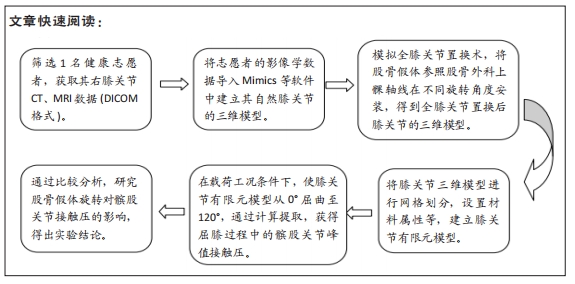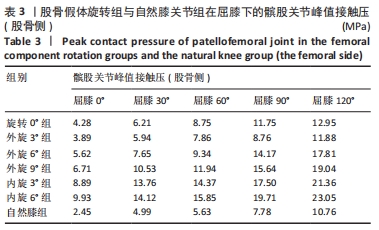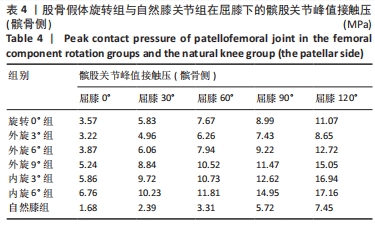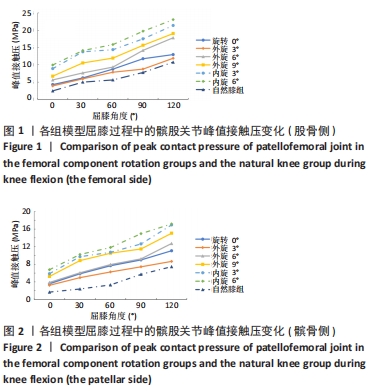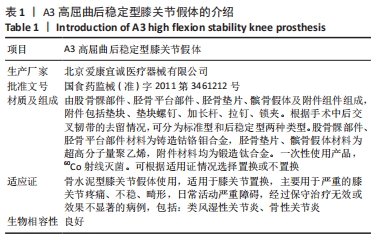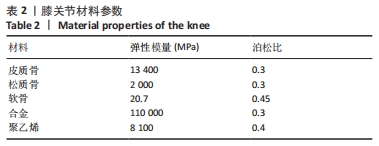[1] RUSSELL RD, HUO MH, JONES RE. Avoiding patellar complications in total knee replacement. Bone Joint J. 2014;96-B(11 Supple A):84-86.
[2] PUTMAN S, BOUREAU F, GIRARD J, et al. Patellar complications after total knee arthroplasty. Orthop Traumatol Surg Res. 2019;105(1s):S43-s51.
[3] SHERVIN D, PRATT K, HEALEY T, et al. Anterior knee pain following primary total knee arthroplasty. World J Orthop. 2015;6(10):795-803.
[4] MATZ J, LANTING BA, HOWARD JL. Understanding the patellofemoral joint in total knee arthroplasty. Can J Surg. 2019;62(1):57-65.
[5] DONELL S. Patellar tracking in primary total knee arthroplasty. EFORT Open Rev. 2018;3(4):106-113.
[6] VICTOR J. Optimising position and stability in total knee arthroplasty. EFORT Open Rev. 2017;2(5):215-220.
[7] MURAKAMI AM, HASH TW, HEPINSTALL MS, et al. MRI evaluation of rotational alignment and synovitis in patients with pain after total knee replacement. J Bone Joint Surg Br. 2012;94(9):1209-1215.
[8] BELL SW, YOUNG P, DRURY C, et al. Component rotational alignment in unexplained painful primary total knee arthroplasty. Knee. 2014;21(1):272-277.
[9] GUSTAFSON JA, ELIAS JJ, DEBSKI RE, et al. Development and validation of a kinematically-driven discrete element model of the patellofemoral joint. J Biomech. 2019;88:164-172.
[10] Michalik R, Rath B, Springorum HR, et al. Vorderer Knieschmerz nach Knie TEP-Implantation : Ursachen, Diagnostik und Therapie [Anterior knee pain after total knee arthroplasty : Causes, diagnosis and treatment]. Orthopade. 2016;45(5):386-398.
[11] Popescu R, Haritinian EG, Cristea S. Relevance of Finite Element in Total Knee Arthroplasty - Literature Review.Chirurgia (Bucur). 2019;114(4): 437-442.
[12] WOICZINSKI M, STEINBRÜCK A, WEBER P, et al. Development and validation of a weight-bearing finite element model for total knee replacement.Comput Methods Biomech Biomed Engin. 2016;19(10):1033-1045.
[13] GU W, PANDY M. Direct Validation of Human Knee-joint Contact Mechanics Derived From Subject-specific Finite-element Models of the Tibiofemoral and Patellofemoral Joints. J Biomech Eng. 2019;142(7):1001.
[14] ALI AA, SHALHOUB SS, CYR AJ, et al. Validation of predicted patellofemoral mechanics in a finite element model of the healthy and cruciate-deficient knee. J Biomech. 2016;49(2):302-309.
[15] MATSUDA S, KAWAHARA S, OKAZAKI K, et al. Postoperative alignment and ROM affect patient satisfaction after TKA. Clin Orthop Relat Res. 2013; 471(1):127-133.
[16] Mannan A, Smith TO. Favourable rotational alignment outcomes in PSI knee arthroplasty: A Level 1 systematic review and meta-analysis. Knee. 2016;23(2):186-190.
[17] CASTELLI CC, FALVO DA, IAPICCA ML, et al. Rotational alignment of the femoral component in total knee arthroplasty. Ann Transl Med. 2016;4(1):4.
[18] JANG ES, CONNORS-EHLERT R, LIARNO S, et al. Accuracy of Reference Axes for Femoral Component Rotation in Total Knee Arthroplasty: Computed Tomography-Based Study of 2,128 Femora. J Bone Joint Surg Am. 2019; 101(23):e125 .
[19] WUERTELE N, BECKMANN J, MEIER M, et al. Posterior condylar resections in total knee arthroplasty: current standard instruments do not restore femoral condylar anatomy. Arch Orthop Trauma Surg. 2019;139(8):1141-1147.
[20] FITZ DW, JOHNSON DJ, HARTWELL MJ, et al. Relationship of the Posterior Condylar Line and the Transepicondylar Axis: A CT-Based Evaluation. J Knee Surg. 2020;33(7):673-677.
[21] GRIFKA J, BAIER C, MADERBACHER G. Improved femoral component rotation in total knee arthroplasty: an anatomical study with optimized gap balancing. Arch Orthop Trauma Surg. 2020;24(5):103-107.
[22] JONES C, NAWAZ Z, HASSAN A, et al. The variability in the external rotation axis of the distal femur: an MRI-based anatomical study. Eur J Orthop Surg Traumatol. 2016;26(2):199-203.
[23] SHETH NP, HUSAIN A, NELSON CL. Surgical Techniques for Total Knee Arthroplasty: Measured Resection, Gap Balancing, and Hybrid. J Am Acad Orthop Surg. 2017;25(7):499-508.
[24] SAFFARINI M, NOVER L, TANDOGAN R, et al. The original Akagi line is the most reliable: a systematic review of landmarks for rotational alignment of the tibial component in TKA. Knee Surg Sports Traumatol Arthrosc. 2019; 27(4):1018-1027.
[25] THIELEMANN FW, KONSTANTINIDS L, HERGET GW, et al. Effect of Rotational Component Alignment on Clinical Outcome 5 to 7 Years After TKA With the Columbus Knee System. Orthopedics. 2016;39(3 Suppl):S50-55.
[26] PIETSCH M, HOFMANN S. Early revision for isolated internal malrotation of the femoral component in total knee arthroplasty. Knee Surg Sports Traumatol Arthrosc. 2012;20(6):1057-1063.
[27] WARSCHAWSKI Y, GARCEAU S, FRENKEL RUTENBERG T, et al. Revision total knee arthroplasty for patellar dislocation in patients with malrotated TKA components. Arch Orthop Trauma Surg. 2020;140(6):777-783.
[28] BÉDARD M, VINCE KG, REDFERN J, et al. Internal rotation of the tibial component is frequent in stiff total knee arthroplasty. Clin Orthop Relat Res. 2011;469(8):2346-2355.
[29] TERASHIMA T, ONODERA T, SAWAGUCHI N, et al. External rotation of the femoral component decreases patellofemoral contact stress in total knee arthroplasty. Knee Surg Sports Traumatol Arthrosc. 2015;23(11):3266-3272.
[30] GROMOV K, KORCHI M, THOMSEN MG, et al. What is the optimal alignment of the tibial and femoral components in knee arthroplasty? Acta Orthop. 2014;85(5):480-487.
[31] KIA M, WRIGHT TM, CROSS MB, et al. Femoral Component External Rotation Affects Knee Biomechanics: A Computational Model of Posterior-stabilized TKA. Clin Orthop Relat Res. 2018;476(1):113-123.
|
